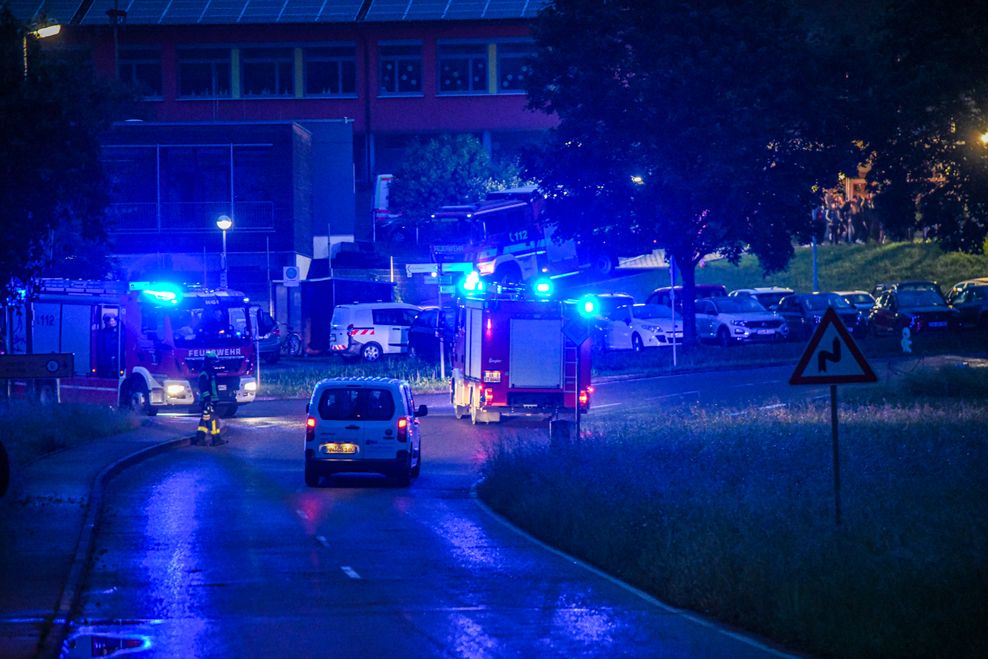(NEXSTAR) — It’s no secret how important bees and pollinators are to our plants, foods and even our water supply. Honey bee products and services have an estimated value of $700 million in the U.S. alone, according to federal officials.
Bee populations have, however, struggled in recent years. A recent study found honey bee colonies in the Pacific Northwest are at a heightened risk of collapse due to climate change-induced warming. Last year, the U.S. Department of Agriculture approved its first-ever vaccine for honeybees to protect them from a foulbrood disease that has already destroyed entire colonies. A bumblebee species once found across roughly a dozen states could soon be listed as endangered. Should it get that listing, it would become the 10th bee species to be ruled endangered.
One of those endangered species may be struggling more.
The rusty patched bumblebee, or Bombus affinis, looks like many other bees you’re familiar with. Their upper bodies are mostly yellow, the bottom of their thorax is black, and they have a black spot or band found between their wings that may extend to their back in a v-shape, the U.S. Fish and Wildlife Service explains. Workers and males have an all-yellow first abdominal segment, and a second that sports a patch of rusty hairs on the front and yellow hairs on the back and sides. Queens are entirely yellow on their first segments, and the rest are black.
The bee was once found in more than two dozen states, according to the FWS: Connecticut, Delaware, District of Columbia, Georgia, Illinois, Indiana, Iowa, Kentucky, Maine, Maryland, Massachusetts, Michigan, Minnesota, Missouri, New Hampshire, New York, North Carolina, North Dakota, Ohio, Pennsylvania, Rhode Island, South Carolina, South Dakota, Tennessee, Vermont, Virginia, West Virginia, and Wisconsin.
Since 2000, only 13 states have had confirmed sightings of the rusty patched bumblebee: Illinois, Indiana, Iowa, Maine, Maryland, Massachusetts, Minnesota (which declared it its state bee), North Carolina, Ohio, Pennsylvania, Tennessee, Virginia, and Wisconsin. In 2017, it became the first bee species to be federally listed as endangered.
Jay Watson, a conservation biologist for the Wisconsin Department of Natural Resources, told Nexstar that it’s unclear what caused the bumblebee’s decline but that it “may be due to a number of interacting stressors.”
“These may include pathogens and parasites, pesticides and fungicides, habitat loss and degradation, managed bees, and the effects of climate change and small population biology,” Watson explains. He noted two more bumblebees of the Bombus subgenus, the yellow-banded bumblebee and the western bumblebee, saw population declines simultaneously across their ranges.
The western bumblebee is under review for the threatened or endangered species list, while the yellow-banded bumblebee is not listed.
As for the rusty patched bumblebee, wildlife officials have recently released a map showing its current range as well as the areas into which the bee could move. Based on an early April update, wildlife experts believe the rusty patched bumblebee has the highest potential of spreading through southern Wisconsin, eastern Minnesota and Iowa, northern Illinois, and along the West Virginia-Virginia border.
Most of the rusty patched bumblebee population — which has declined by roughly 90% — is now primarily in West Virginia and in and around Wisconsin. Watson says the map is intended to help officials determine where the rusty patched bumblebee “is likely to be present and where federal agencies should cooperate with the FWS to evaluate the potential effects of their actions.”
However, a recent study led by the University of Colorado shows colonies in the upper Midwest, central Midwest and Appalachians are “genetically distinct” and “will need to be handled differently for potential recovery efforts.” Some of those colonies are also experiencing high rates of inbreeding, which can “threaten the long-term viability of a species.”
It isn’t entirely a death sentence, though. According to the lead author of that study, ecologist and assistant professor of forest and rangeland stewardship John Mola, the rusty patched bumblebee has seen efforts to restore its habitat since earning its endangered species listing.
There are ways you can help, too.
If you live in any areas that could support the rusty patched bumblebee (or any pollinator, for that matter), Watson emphasized two ways to support the species: provide more floral resources and cut back on the use of pesticides.
“The best way to attract a variety of bumblebee species and other pollinators to your yard throughout the season is having a good habitat,” Watson tells Nexstar. That includes not only a variety of native flowers that can bloom from spring to fall, but also providing nesting and hibernation locations: piles of leaves, plant stems, sticks, rodent holes and grass mats, for example.
Surveys have found some of the best flowers for the rusty patched bumblebee include Dutchman’s breeches, eastern bluebells, wild bergamot, Culver’s root and milkweed species. It’s worth noting that the best pollinator plants may vary depending on where you live.
Those in Wisconsin can also join the DNR’s Bumble Bee Brigade, a volunteer monitoring project that invites participants to submit photos and additional information about the bees they see.
“By helping rusty patched bumblebees with improving and creating more habitat we are also helping other pollinators that are declining like the Monarch butterfly,” Watson explains.
May 20 marks World Bee Day, according to the United Nations.





